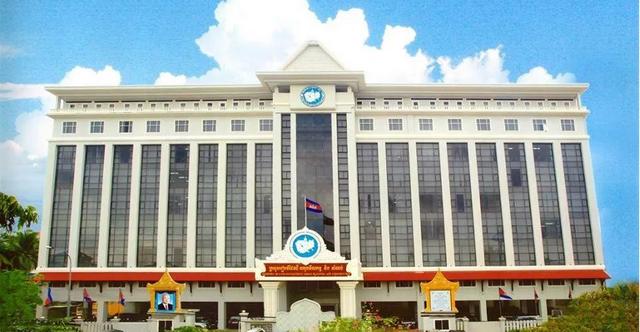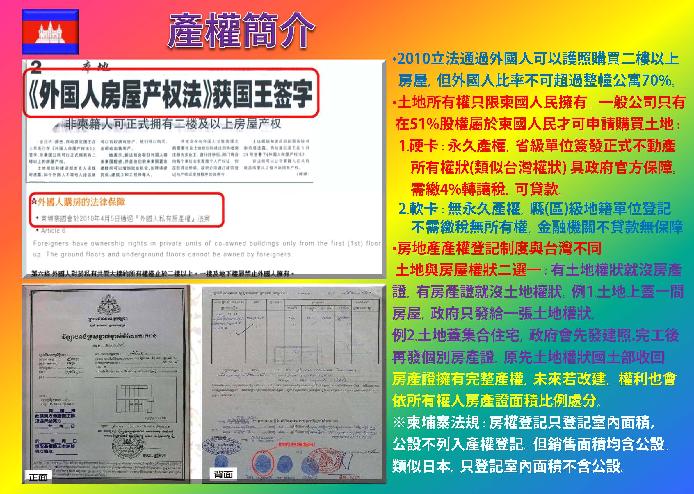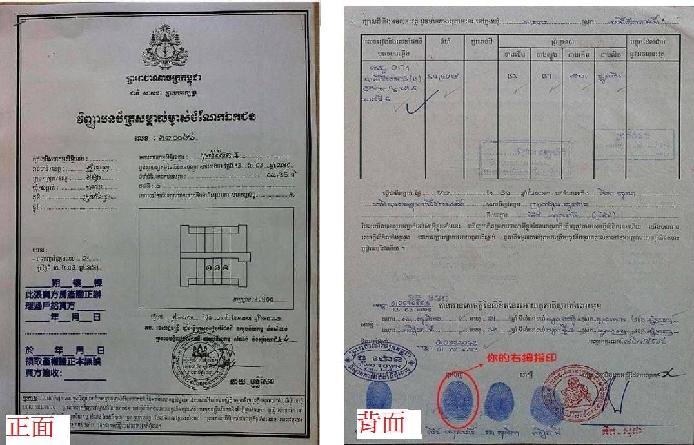
Real estate registration system
The Cambodian Land Law was officially passed in 2001, but most of the land in Cambodia has not yet been registered. At present, there are two types of land registration property rights in Cambodia: "hard card" and "soft card".
1. "Hard card": It is a permanent property right. The owner has a real estate certificate issued by the Ministry of Land and Resources of the government, similar to Taiwan's certificate of title, with government guaranteed rights, and financial institutions can lend. (as shown on the right)
2. "Soft card": non-permanent property rights, the occupant has not obtained the real estate certificate issued by the Ministry of Land and Resources of the government, similar to Taiwan's superficial rights and BOT, the land has no ownership, only the right to use, relatively insecure, and financial institutions do not lend. The document paper is so named because it is inferior to hard card and soft. Occupying state-owned land without legal recognition due to factors such as state-owned land, social unrest, and war in the past is regarded as a staged proof of property rights. However, it has not obtained legal approval from the government and issued a hard card, resulting in land disputes and property rights disputes. It may be a sales certificate, a private transfer contract, a certificate issued by a developer, or even a certification from a local government. If a developer leases government land for development and sales, the lease is up to 99 years, and what the buyer gets is the developer's certificate, not the real estate certificate issued by the government's Ministry of Land and Resources. Possible risks: property rights disputes, overselling of one house, closure of developers, and less security for buyers. Soft cards still play an important role in Cambodian social customs and practices. But in law, the concept of soft card is not defined in words, and the owner of the property right is only the possessor in law, and must be registered in accordance with the procedures stipulated in the land law to be determined as the legal owner.
Soft card record content:
1. The name of the owner in the front hand (occupant)
2. The village/township, commune, district and province where the real estate is located (generally there is no specific location or road name information)
3. Owners or occupants adjacent to each other in four main directions: east, west, north, south
4. The approximate size of the target (square meters, acres or hectares)
When a property is held on a soft card, it may be claimed by others (including state authorities) as long as the property is not clearly delimited by a statutory land registry unit. Another common problem is overlapping with neighboring land boundaries. Before 2000, due to backward technology, there was no reliable method for measuring and demarcating boundaries, so a large number of land boundary overlapping problems occurred. After 1995, Cambodia introduced a pilot property registration project, and the national and reliable registration system was officially introduced after the Land Law was passed in 2001. In fact, many Cambodian land and properties are still not registered, but are held in the form of soft card files. Some are privately owned and hold soft card file properties, and are even located on state-owned land. In order to help farmers and small businesses, some microeconomic institutions accept soft cards instead of hard card certificates as proof of loan approval for the sake of pragmatism and efficiency. However, the vast majority of financial institutions, such as commercial banks, are aware of the high risks of soft cards, and most of them only accept full registration for lending, and have hard card certificates issued by land administration units. Effective and permanent postmarks or fences are clearly demarcated between the property and the adjacent land, which is an important step to reduce the risk of overlapping land boundaries before the land administrative units are registered together. There is a one-month announcement period before the hard card certificate is officially issued after the land survey, boundary appraisal, survey and preparation of the cadastral index map. During the announcement period, the owner of the adjacent land must check the investigation report, and if there is any doubt, he must submit a written statement to the land administration authority. After the announcement period, if there is no dispute, this legal document will be used as the basis for the land authority to issue official property rights. After completing the legal authorization and certification procedures, any third party shall not claim ownership of this property.
Hard card property rights are more secure both physically and legally. There are two types of hard cards:
A. Certificate of Immovable Property Possession (or Land Use Certificate)
B. Certificate of Immovable Property Ownership
Both are certificates of registration with the Land Administration in accordance with the Land Law and are printed on official good hard paper. Ownership certificates are usually issued by local land administration agencies based on the application of property owners, because they need to be registered with the Land Management Urban Planning and Construction Bureau (MLMUPC) through the inter-provincial national system registration program, so higher land tax fees are levied. Ownership in the form of a hard card is the safest, clearest and most secure. Ownership is usually not contested under land laws. After the pilot registration system was officially introduced from 1995 to 2001, there were about 1,500,000 land registrations between 2002 and 2009, and about one million title certificates were issued nationwide.
A. Certificate of Immovable Property Possession or Land Use Certificate (Certificate of Immovable Property Possession), generally referred to as "ownership", the content of the record is as follows: (as shown above)
1. Property number and registration number
2. Issuing unit and date
3. The location of the property: road name, township, community, subdivision and province
4. The name of the owner who is adjacent to the east, west, north, south, and four directions
5. Types of land use
6. Property size (square meters, acres or hectares)
7. Owner information: including the names of parents
8. The basis for obtaining the property: including receipts, land division documents, sales contracts, gift contracts, inheritance letters or court judgments, etc.
9. Mortgage rights: If there is a lease, loan mortgage setting or other trust information, it will be recorded.
10. Remarks: If the ownership is a company, the company information must be recorded.
B. The contents of the Certificate of Immovable Property Ownership are as follows: (as shown above)
1. Property number
2. Certificate serial number
3. Issuing unit and date
4. The location of the property: road name, township, community, subdivision and province
5. The cadastral index map with GPS information added, and the location of the adjacent land is displayed
6. Types of land use
7. Property size (square meter)
8. Owner information: including the names of parents
9. The basis for obtaining the property: including receipts, land division documents, sales contracts, gift contracts, inheritance letters or court judgments...etc.
10. Mortgage rights: If there is a lease, loan mortgage setting or other trust information, it will be recorded.
11. Remarks: If the ownership is a company, company information must be recorded.
※Special note: According to the regulations of the Cambodian government, the registration of house property rights, the real estate certificate only registers the indoor area, and the sales area includes the public part, which is not included in the registration of the real estate certificate. Similar to Japan, only the indoor area is registered, and public settings are not included. |




 .......热点省份代理人 詹经理 Rock Chan
.......热点省份代理人 詹经理 Rock Chan